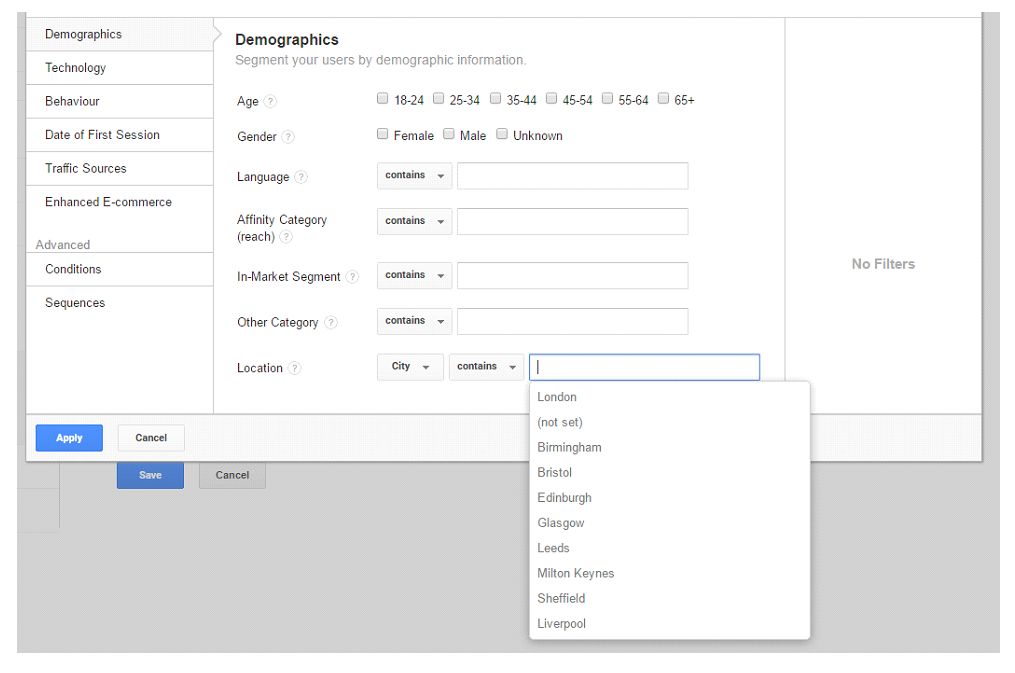The idea of retargeting (also known as remarketing) is simple: people who have already interacted with your brand (visited your site) are more likely to go on to convert in the future.
Perhaps though, it isn’t quite as simple as it initially seems. Some previous visitors are much more valuable to you than others. That’s where audience segmentation and creation becomes invaluable.
Some site visitors might be part of a demographic or live in a geographical area with a high conversion rate or have displayed behaviour suggesting engagement with the site. The name of the game is testing different messaging to these segments and retargeting them with engaging, relevant and enticing ads.
Here are a few examples of great Google Analytics Audiences every search marketer should have in their arsenal.
Past converters
This is one of the most important retargeting lists to create because it allows you to target customers who have already converted through the website. The lookback period of the audience is also flexible so we created one list for converters in the last 30 days and another for converters in the last 90 days. This list can be used as part of a Google Display Network (GDN) display campaign looking to re-engage users with ads on the GDN or as an RLSA on search campaigns to increase bids on past converters.
Users who have spent more than X seconds on site
Users who have spent longer on your site are more likely to convert than users that have spent just a couple of seconds. These users are worth segmenting with a GA audience.
For one of our clients we created a list of non-converters whose session duration exceeded 172 seconds based on GA insights that average session duration for the client’s site was 2 minutes 52 seconds. Any user who exceeded this time had shown a qualified interest in the products on site. Perhaps these non-converters could be enticed with a special offer? Worth testing ad creative to lure them back.
Users from geographical areas with high conversion rates
In the Audience-Location section of GA, you can toggle ‘City’ as the primary dimension to see which cities have the highest volume of conversions and highest conversion rates. With this information you can create an audience targeting non-converters in these cities. For one client we noticed Southampton, Cardiff and Bristol had significantly higher conversion rates than other UK cities so we created audience lists targeting these users in the demographics section of GA audience builder. We then applied these lists to specific individual city non-converters ad groups in our remarketing campaign with tailored ad copy relevant to that city. Engagement rates with ads were stronger for these audiences than our undefined audiences.
Users who fit into a valuable demographic
Google Analytics can also show you which age ranges and genders drive high conversion rates in Audiences-Demographics. Definitely create one or more audiences based around these lucrative demographics for your retargeting campaign. Make sure to exclude past converters from these audiences and perhaps further qualify the audience by combining the demographic targeting with time on site, low bounce rate or pages visited etc.
Again, demographic audiences might be worth testing as an RLSA – for example, if female users 18-24 drive the lion’s share of transactions on your website, you may want to bid +35% more when this audience triggers a PPC ad, as you know that cost per sale is lowest and conversion rate is highest.
Users who have visited specific site pages
These lists allow you to create more relevant messaging for users depending on what site pages they have visited. Here are a few possible audiences:
- Users who looked at a specific product page could be targeted with ads offering more information about the product and possibly shouting about free delivery or customer testimonials to entice a sale.
- Users further down the purchase funnel and have abandoned their shopping cart could be targeted with reminder messages or offers that might convince them to return and complete the purchase.
- Users who have looked at a category page could be targeted with a reminder of what brands or specific products you stock within that category.
With all of these specific page audiences, they can be as granular as you like, but should be informed by GA data, perhaps prioritising most visited pages.
Conclusion
These are just a few examples of GA audience lists at your disposal – and of course a combination of the above segments can be tested, along with different lookback windows – but our suggestions are by no means exhaustive. This list should help your remarketing campaign gets off to a good start, and then it’s all about testing and optimising as you go – ad copy and creative is always worth testing regularly.
If you have had any experience with revolutionary GA audience lists that we haven’t explored please comment below and let us know what remarkable remarketing results your lists have driven.



